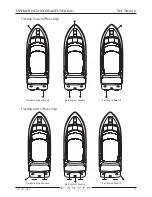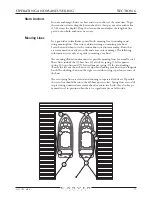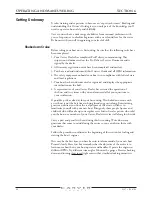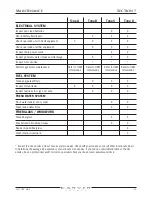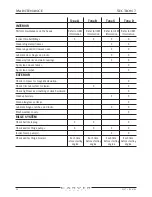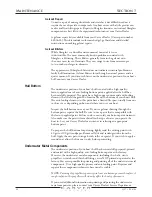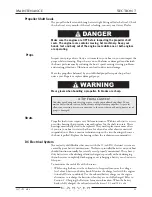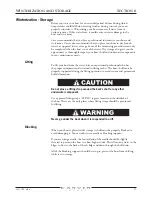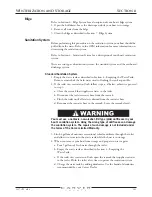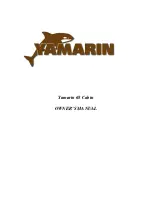
88
3327 • P2 6/06
MAINTENANCE
SECTION 7
Gelcoat Repair
Cosmetic repair of minor gelcoat nicks and scratches is not difficult nor does it
require the use of special or unique tools. Any boat owner with a little practice can
make visually satisfying repairs. Repairs to fiberglass laminates or structural fiberglass
components are best left to the experienced technicians at your Carver Dealer.
A gelcoat repair kit is available from your Carver Dealer (Carver part number
82036-03). This kit includes color matched gel, gel hardener and detailed
instructions on making gelcoat repairs.
Gelcoat Blisters
While fiberglass is a durable and economical material, it is not
indestructible. The most commonly known problem associated with
fiberglass is blistering. These blisters generally form in the gelcoat or in
the outer most layer of laminate. They can range in size from microscopic
to two inches or larger in diameter.
The appearance of fiberglass blisters does not indicate structural problems or
faulty hull lamination. Gelcoat blisters form through a natural process and are
quite common. If you discover blisters on the underwater portion of your boat’s
hull, contact your Carver Dealer.
Hull Bottom
The underwater portion of your boat’s hull is coated with a high-quality,
factory-applied coat of anti-fouling bottom paint, applied after the hull has
been carefully prepared. The paint has a high copper content and anti-fouling
elements that retard the growth of marine life on the bottom of your boat’s hull.
The anti-fouling elements in this paint have a limited life span, usually from one
to three years, depending on how and where you use your boat.
Inspect the hull bottom once a year. If you see gelcoat showing through the
bottom paint, repaint the hull. Be sure to use a paint that is compatible with
the factory-applied paint. Failure to do so can void your bottom paint warranty.
Also make sure the paint is formulated for the type of water you operate the
boat in. See your Carver Dealer for assistance in selecting an appropriate
bottom paint.
To prepare the hull bottom for painting, lightly sand the existing paint with
80 grit or 100 grit sandpaper. Remove all dirt and sanding residue from the
hull. Apply the new paint using a brush, roller or sprayer. If you wish to apply a
second coat, allow the first coat to dry before proceeding.
Underwater Metal Components
The underwater portion of your boat’s hull has been carefully prepared, primed
and coated with a high-quality, anti-fouling bottom paint at the factory.
However, the underwater metal components, including the shafts, struts,
propellers, trim tabs and thru-hull fittings, were NOT primed or painted at the
factory. You are responsible for priming and painting all of the underwater metal
components. Use a high-quality primer and anti-fouling paint. Reprime and
repaint these components whenever bare metal is visible.
NOTE:
Painting the propellers requires special care at attaining a smooth surface. A
rough surface on the propellers will seriously affect the boat’s performance.
If you need additional information on priming and painting the underwater
metal components, please contact your Carver Dealer’s Service Department.
Summary of Contents for 380 SPORT
Page 1: ...HIN CDR _________________ 380 Sport Owner s Guide 2007 Version 1 ...
Page 2: ......
Page 4: ......
Page 6: ......
Page 8: ......
Page 28: ......
Page 40: ...28 3327 P2 6 06 DC ELECTRICAL SYSTEM SECTION 2 DC SCHEMATIC 3327 324 002 5 12 7 05 ...
Page 54: ...42 3327 P2 6 06 AC ELECTRICAL SYSTEMS SECTION 3 AC SCHEMATIC 3327 300 015 2 9 04 ...
Page 108: ......
Page 122: ......
Page 124: ...112 3327 P2 6 06 WARRANTY AND PARTS SECTION 9 Hatches ...
Page 129: ...3327 P2 6 06 117 WARRANTY AND PARTS SECTION 9 Bill of Material ...
Page 130: ......
Page 131: ...3327 P2 6 06 119 WARRANTY AND PARTS SECTION 9 Carver Limited Warranty ...




